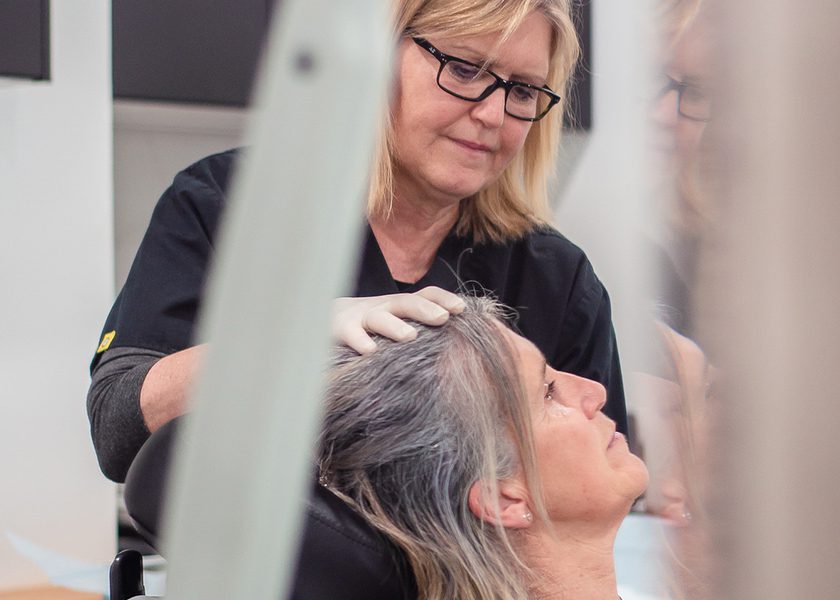PDO Thread Treatments – Consultation-Based Rejuvenation
PDO Threat Treatments are a non-surgical option used by healthcare professionals to support skin structure and promote collagen production. Threads made of absorbable suture material are placed under the skin by a trained practitioner. This treatment may assist in achieving improvements in areas such as the lower face and neck, depending on individual factors.
Please contact our clinics to arrange a personalised consultation and assessment.

Pricing
Regulation prevents us from providing pricing. Pricing will be discussed as part of the consult to discuss your requirements and treatment plan.
Frequently Asked Questions
Firstly, the area is cleaned and then marked up for the intending thread placement. Local anaesthetic is then injected to create a block and local infiltration is also added to the area of entry. A fine needle will be used to pull the thread beneath your skin. The thread is then delivered to the desired area and engaged. Next, the skin is raised and adjusted to the position that is desired.
There should be no scarring left from this procedure, as only small openings are used and normally near the hairline. A thread lift procedure normally lasts around one to one and a half hours.
Unlike a surgical face lift, there is no need for a general anaesthetic. A local anaesthetic is used to reduce pain. We do also offer the use of a penthrox pen if needed at an additional cost.
All medical procedures, including non-surgical options such as PDO thread lifts, carry potential risks and side effects. It is important to undergo a consultation with a qualified health professional to determine if this treatment is appropriate for you.
Potential side effects may include:
-
Mild swelling, bruising, and tenderness in the treated area, typically resolving within a few days
-
A temporary sensation of tightness or mild dimpling of the skin, which usually resolves without intervention
-
Infrequent outcomes such as thread migration, minor surface irregularities, or temporary asymmetry
-
Rare but more serious risks may include infection, inflammation, nodule formation, or nerve involvement
The outcome and potential side effects can vary depending on individual anatomy, the technique used, and the specific threads applied. For this reason, it is essential that treatment is performed by an appropriately qualified and experienced practitioner.
We encourage all individuals to discuss expected outcomes, risks, and alternatives in detail with their healthcare provider before proceeding.
Some downtime will be required for a Thread Lift but again, this will be significantly less than is required for a surgical face lift. Patients normally take one to two days off work for recovery and to allow any swelling or discolouration to fade. However, this is not always necessary. Thread Lift patients should avoid strenuous exercise or activity for approximately five days to aid in the recovery process.
The best candidates for a Thread Lift are those who are in good physical condition, aged between 35 and 65 and with moderate ‘sagging’ or skin laxity.
If you are experiencing drooping skin and wrinkles, as well as loss of volume on your face through the ageing process, this procedure may be the right one to allow for a more youthful appearance. If you have had a surgical facelift but are experiencing sagging skin again, you may also be a good candidate for a Thread Lift.
Further Information
PDO thread lifting is a non-surgical treatment that involves the insertion of dissolvable threads under the skin to provide a lifting effect. Compared to some other cosmetic procedures, PDO thread lifts are associated with different potential risks and benefits.
The threads are gradually absorbed by the body over several months. Some people may experience temporary effects such as swelling, bruising, mild soreness, or a sensation of tightness in the days following treatment. Temporary skin irregularities such as mild dimpling may also occur and generally resolve within a short period.
As with any medical procedure, there are potential risks, which may include thread migration, visible threads, asymmetry, or, more rarely, infection or nerve involvement. These risks may vary depending on the technique used, the practitioner’s experience, and individual factors.
A consultation with a qualified healthcare practitioner is required to assess your suitability for treatment and to discuss the potential benefits and risks.



